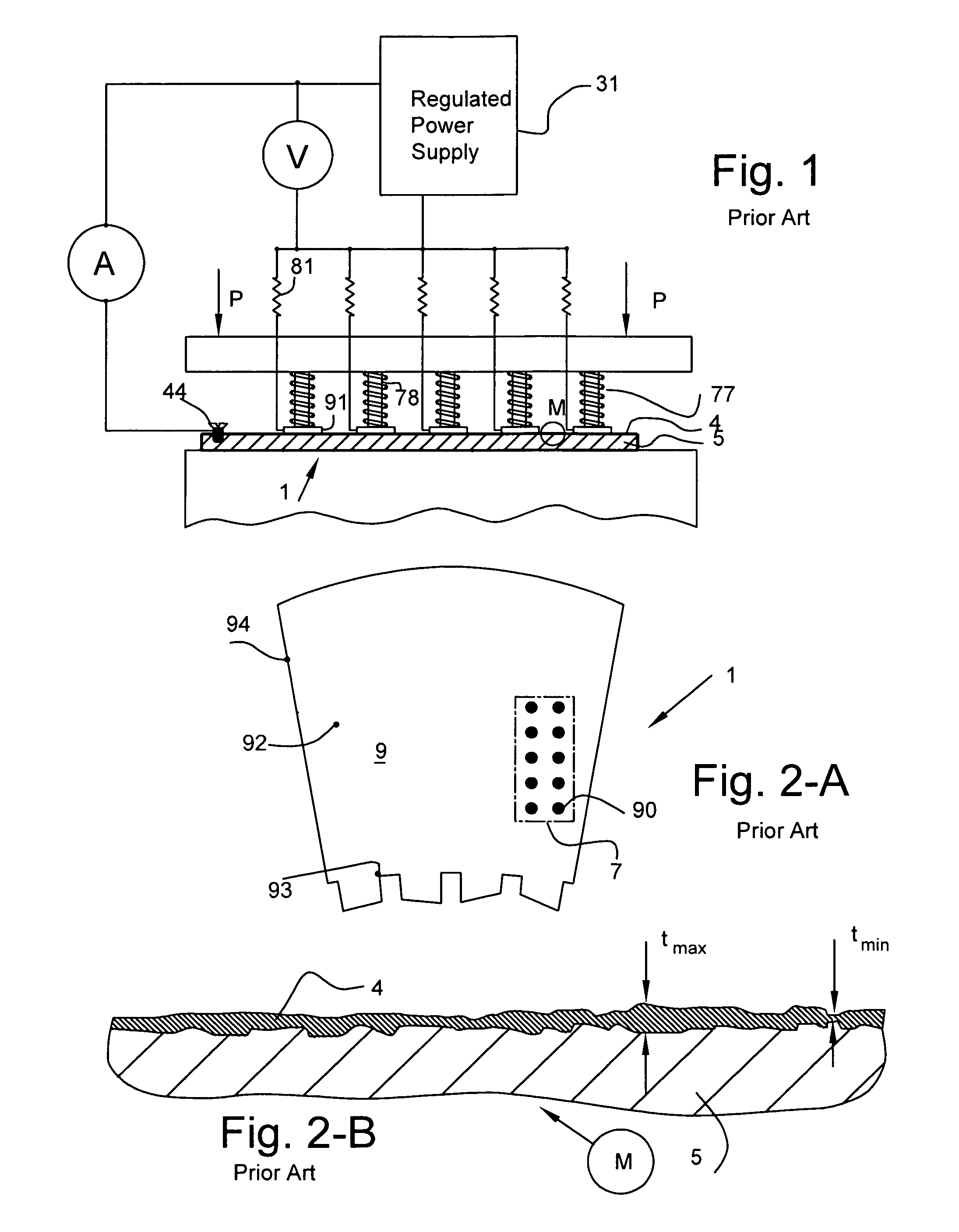Apparatus for measuring insulation characteristics of coated steel sheet
a technology of coating steel sheet and measuring apparatus, which is applied in the direction of air break switch, line transmission details, instruments, etc., can solve the problems of franklin tester, cast doubt on its usefulness in measuring insulation quality, uneven wear, etc., and achieve the effect of reducing the possibility of core failur
- Summary
- Abstract
- Description
- Claims
- Application Information
AI Technical Summary
Benefits of technology
Problems solved by technology
Method used
Image
Examples
embodiment 200
[0041]FIG. 4-A shows the schematic of an alternative embodiment 200 of the roving tester. This roving tester 200 comprises a cylindrical electrode 10, shafts 12a, 12b and a rotatable electrical connector (abbreviated as REC) 30, all located on the same axis of rotation. FIG. 4-A also shows the roving tester 200 resting on top of a test specimen 1. The test specimen 1 itself is attached to a flat worktable 99. The cylindrical electrode's round surface 13 makes a line contact 20 with the coating's surface 4. (in FIG. 4-A this line contact is shown as one line 20 for the sake of clarity). An electric circuit 38 applies a specified voltage across the terminal of REC 45 and a drill bit contact 43 electrically connected to the base metal 5 of the test specimen.
[0042]In the roving tester 200, cylindrical electrode 10 is preferably harder than that of test specimen 1, but it can be made softer without altering the invention. The round surface 13 of cylindrical electrode 10 is conductive and...
embodiment 300
[0048]FIG. 4-B shows an alternative embodiment 300 of roving tester which tests insulation on both sides 4a, 4b of steel strip or a lamination. This roving tester 300 is suitable for use with a coating line. After coating is applied on both sides of steel strip and fully cured, the steel strip or lamination 1 passes between two rollers 25, 26 under pressure. The rollers rotate in opposite directions. These rollers are conductive and are in full mechanical and electrical contact with the cured coating 4a, 4b on both sides of strip 1. Rotatable electrical connectors 37, 38 are attached to the rollers 25, 26 at one end. To test the insulation quality of coating, a regulated power supply 24 is connected to stationary terminals of rotatable electrical connectors as shown and it applies a regulated voltage. Current then passes from supply 24 into REC 37, into roller 25, into coating 4a on first side of steel strip 1, then into iron 5, into coating 4b on second side of stell strip 1, into ...
PUM
| Property | Measurement | Unit |
|---|---|---|
| thickness | aaaaa | aaaaa |
| voltage | aaaaa | aaaaa |
| interlaminar voltage | aaaaa | aaaaa |
Abstract
Description
Claims
Application Information
 Login to View More
Login to View More - R&D
- Intellectual Property
- Life Sciences
- Materials
- Tech Scout
- Unparalleled Data Quality
- Higher Quality Content
- 60% Fewer Hallucinations
Browse by: Latest US Patents, China's latest patents, Technical Efficacy Thesaurus, Application Domain, Technology Topic, Popular Technical Reports.
© 2025 PatSnap. All rights reserved.Legal|Privacy policy|Modern Slavery Act Transparency Statement|Sitemap|About US| Contact US: help@patsnap.com



